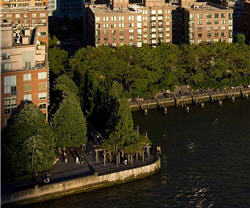
Water Reuse: Restoring Confidence in Our Future
- By Mark LeChevallier
- Jun 12, 2012
Nearly everyone can recall being told to conserve water at some point in our lives…turn off the faucet while brushing your teeth, run the shower only just before entering, don’t wash the car during particularly dry summers. We viewed these directives as minor inconveniences -- the idea of communities experiencing serious water shortages was reserved for developing nations.
Until now. Fewer showers and carwashes can help, but collectively are not enough to make a dent in water supply challenges that are eminent here in the U.S. It’s time to face facts:
Fact #1: It has been estimated that by 2013, 36 states will be facing serious water shortages, while water demand is expected to soon outpace water supplies in megacities such as Los Angeles.
Fact #2: Communities across the nation are increasingly experiencing water shortages, compromising the longevity of a national water supply that is threatened by droughts, changing consumption patterns, and continued population growth and redistribution.
Fact #3: The nation’s water and wastewater infrastructure is in dire need of repair. Leaking and broken pipes waste more than 7 billion gallons of treated drinking water each day (enough to fill 10,000 Olympic-sized swimming pools) -- nearly two trillion gallons each year. Every two minutes, a significant water line ruptures somewhere in the U.S.
Fact #4: In the U.S., potable water accounts for only about 1 percent of overall water consumption. One of the solutions showing great potential for stemming the issue is reusing water for non-potable purposes.
While this situation is critical, the good news is that innovative technologies are slowly turning the tide, helping to alleviate stress on current systems, while supporting growth and economic development. One prominent solution is water reuse.

The Solaire's wastewater recycling system treats 25,000 gallons of wastewater per day, which is reused for flushing toilets, filling the cooling tower and irrigating the building’s 10,000 square feet of rooftop gardens.
Reuse is Working – We Need to Do More
Water is reused in two main ways: non-potable reuse, in which treated wastewater is used for agriculture and landscape irrigation, industrial applications (such as cooling processes), toilet flushing and fire protection; and indirect reuse of wastewater to recharge ground water supplies, allowing treated wastewater to percolate down to aquifers and replenish water sources. Overall, non-potable and indirect reuse of water in the U.S. is growing rapidly, with more than 2 billion gallons reused per day, and volume increases at an estimated 15 percent annually.
While water reuse is helping some communities meet demand by finding alternate sources for the largest water “consumers” -- the non-potable uses -- there is a larger cache of benefits for future water reuse, including:
- Decreasing the amount of wastewater discharged into bodies of water, long considered a pollutant.
- Nutrients in the discharge can be utilized as fertilizers in irrigation.
- Reuse to non-potable (versus potable) standards is more energy efficient, and precludes the need to purchase or draw upon new water sources.
- Reducing water volumes can alleviate stress on our nation’s water infrastructure. Reuse systems can also be implemented while pipes and facilities are being updated/repaired.
- Financial incentives, which may include water rate and tax subsidies for compliant communities, businesses and industries.
- Reuse projects can foster a community’s economic growth.

The Visionaire, which has LEED® Platinum certification, is commonly known as the greenest residential high-rise in the country. Its wastewater recycling facility has 25,000 gallons per day capacity for building and irrigation use and the system is able to store up to 15,000 gallons of treated effluent in its tanks.
Working with like-minded public and private partners, a number of developers have created highly efficient and effective water reuse systems that are helping communities avert major shortages. Case in point: Recycling nearly 2 billion gallons of water annually, American Water has designed, built and implemented water reuse systems for projects ranging from five high-rise residences in Manhattan’s Battery Park, saving approximately 56 million gallons per year, to the New England Patriots’ Gillette Stadium complex where 250,000 gallons is conserved at every major event, to a citywide system in Fillmore, California, providing 1 million gallons per day for irrigation and groundwater recharge. Without water reuse solutions, these facilities, and many others, would not exist or could not operate according to requirements.
However, despite such progress, only a small percentage has taken up the mantle of leadership in this arena. Communities, businesses and industries across the U.S. must prioritize implementing such systems and technologies. Financing must be provided for wastewater infrastructure projects that will safeguard long-term water supply. Incentives, such as the Clean Water State Revolving Fund, must expand, along with public-private partnerships. Wastewater and water agencies must collaborate to set policies and develop system and facility plans optimizing water-recycling opportunities. Community leaders must educate consumers about water reuse and mitigate any public safety and cost concerns.
We should think of this not as revolutionary change, but “evolutionary sense.” America’s history teems with examples of rising to the occasion – from the 1970s fuel crisis to modern-day energy conservation and recycling, and, of course, the Clean Water Act’s many “life-saving” initiatives. Water reuse cannot solve scarcity issues alone, but it is an essential part of a sustainable approach toward water resource management.
About the Author
Mark LeChevallier, Ph.D., is director of innovation and environmental stewardship at American Water, the largest publicly traded U.S. water and wastewater utility company.